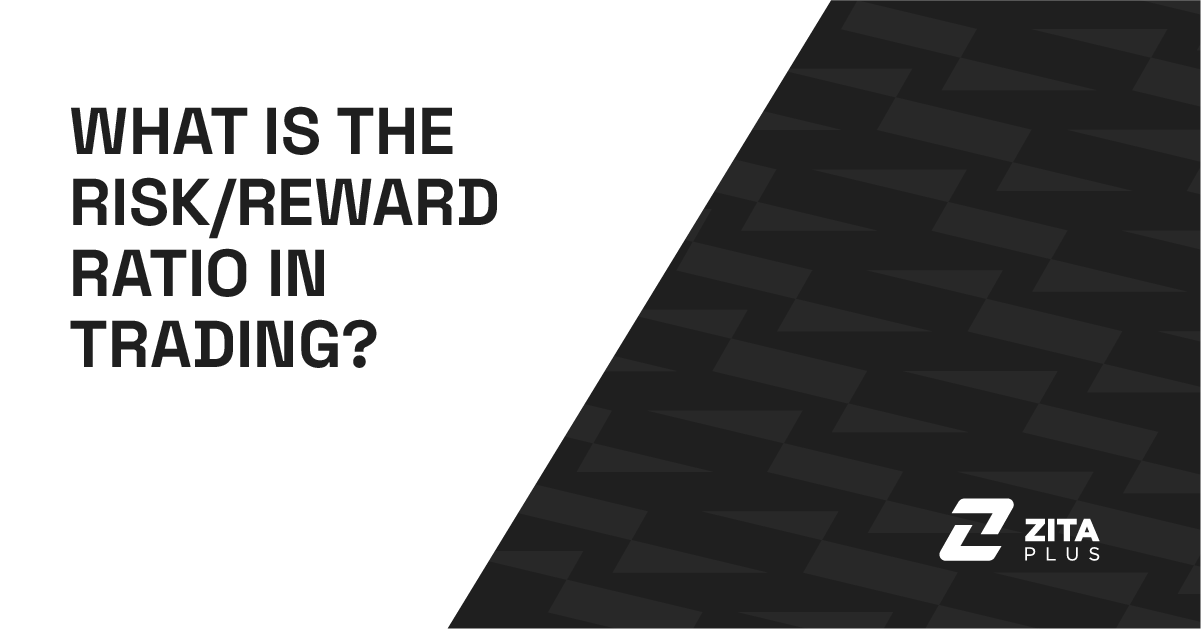
The risk/reward ratio in trading is a simple way to measure how much potential reward you’re aiming for compared to how much you’re willing to risk. It answers the question: Is this trade worth it?
Let’s say you’re risking $100 on a trade (your stop-loss) and aiming to make $300 (your take-profit). Your risk/reward ratio is 1:3. In other words, for every dollar you risk, you stand to gain three. Even if you only win a few of those trades, the math can still work in your favor.
Calculating the risk/reward ratio is simple, and once you get the hang of it, it becomes second nature in your trade planning.
Here’s the basic formula:
Risk/Reward Ratio = (Entry Price – Stop-Loss) ÷ (Take-Profit – Entry Price)
Let’s break that down with an example.
Example:
You’re looking to buy a stock at $50.
You place your stop-loss at $48 (risking $2 per share).
Your target price is $56 (aiming to gain $6 per share).
Risk = $50 – $48 = $2
Reward = $56 – $50 = $6
Risk/Reward Ratio = 2 ÷ 6 = 1:3
This means you’re risking $1 to potentially make $3, a favorable setup for most trading strategies.
Key Points to Remember:
Using a consistent risk/reward formula keeps your decisions rational, helping you filter out trades that don’t make sense from a profit-loss perspective, no matter how tempting they look.
So, what’s considered a “good” risk/reward ratio? The short answer: it depends on your strategy, win rate, and trading style, but there are some general benchmarks to guide you.
Most traders aim for a minimum of 1:2, meaning they risk $1 to potentially earn $2. This ratio gives room for losses while still keeping your stance positive over time. More aggressive setups might go for 1:3 or higher, which allows even a 40% win rate to stay profitable.
Here’s how it breaks down:
But here’s the key: a higher ratio isn’t automatically better. Stretching for unrealistic take-profit targets can lead to missed opportunities or emotionally driven exits. The best risk/reward ratio is one that fits your trading plan, respects market conditions, and allows you to stay consistent.
A strong setup means nothing if the reward doesn’t outweigh the risk. That’s why smart traders don’t just look at charts; they do the math first. The risk/reward ratio isn’t just a number. It’s a filter, a guide, and a weapon against emotional trading.
Here’s how to actually use it where it counts in your strategy:
Start every trade with a question:
If this goes wrong, how much do I lose? And if it goes right, is it worth it?
If the answer isn’t at least a 1:2 ratio, many traders don’t bother. It’s not about being picky. It’s about being consistent.
Don’t force bad trades just to be active.
Using a risk/reward filter means walking away from setups that look tempting but don’t offer enough upside. It also helps you avoid revenge trades and fear-of-missing-out (FOMO) decisions that usually end badly.
Use it with position sizing.
Say you’re risking $100 on a trade with a 1:3 ratio. That means you stand to gain $300. Knowing this helps you size the trade correctly without overexposing your account.
Review it like a pro.
Track the average risk/reward ratio of your trades. Combine it with your win rate, and you’ve got a clear view of your performance. High ratio, low win rate? Still profitable. Low ratio, low win rate? Time to rethink things.
The risk/reward ratio isn’t about getting every trade right. It’s about making sure the wins matter more than the losses, every single time.
The goal isn’t just to have a solid ratio, but to consistently find trades where it's beneficial for your overall strategy. A thoughtful approach to losses can be just as powerful as a winning streak.
Every trade you take should earn its place in your strategy. When you combine technical skill with risk-aware thinking, your trades stop relying on luck and start working by design.
The risk/reward ratio is often misunderstood or misapplied. Even with a well-defined strategy, overlooking key details can lead to inconsistent results. Below are some of the most common errors traders make when working with risk/reward:
A clear understanding of trade structure, market behavior, and strategic planning helps ensure the ratio works as a long-term tool for risk management and performance improvement.
Seeing the risk/reward ratio applied in real trading scenarios brings the theory to life. Below are two simplified examples to show how traders use the ratio to evaluate and manage trade setups.
Example 1: A Well-Planned Trade
A trader is analyzing EUR/USD. They plan to enter at 1.0850, place a stop-loss at 1.0820, and aim for a take-profit at 1.0910.
This setup offers double the potential reward compared to the risk. Even if the trader wins only 50% of the time with similar setups, the strategy remains profitable over time.
Example 2: A Poor Risk/Reward Structure
A stock trader buys at $100, sets a stop-loss at $98, but targets only $101.
In this case, the potential loss is greater than the potential gain. Even with a high win rate, this structure may not be sustainable in the long run.
The risk/reward ratio helps you think clearly before you trade, take setups that actually make sense, and avoid the kind of decisions that feel right in the moment but fall apart later. It’s not a magic formula; it’s just a way to stay grounded when markets get noisy.
A few things to keep in mind:
If you treat risk/reward as part of your process, not an afterthought, it becomes second nature. Over time, that habit can quietly shape better decisions and better outcomes.
Would like to learn how to look financial markets from a different angle? Then keep reading and invest yourself with ZitaPlus.